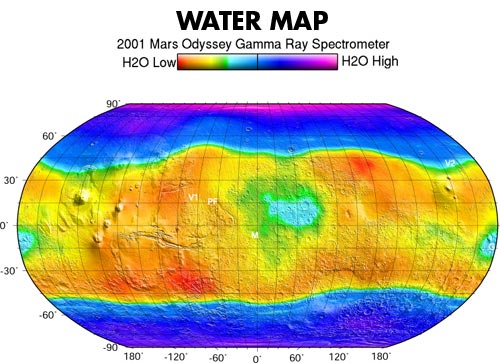It’s been a great month for planetary science. Scientists first discovered the chemical signature of phosphine on Venus, then found additional underground lakes on Mars. While no life has been conclusively found yet, science continues to take incremental steps toward proving what could be one of the most impactful discoveries in history: that we are not alone.
But in order to definitively prove that, science will have to conclusively find life first. The methods for doing so will differ dramatically based on whether the location is in the clouds of Venus or under the ice of Mars. Scientists have come up with a model to understand the conditions for any life to exist in the subsurface oceans of not only Mars, but any rocky body with underground liquid water.
The theoretical work, done by Dr. Manasvi Lingam at Florida Institute of Technology and Abraham Loeb of the Center for Astrophysics at Harvard, describes a model that uses well-established parameters for life. These include the thermal limits of life as we know it, the size of the object being studied, its surface temperature, and the amount of radionuclides available on the object. The outcome of the model is the size of an expected sub-surface habitable region.

Credit: NASA
This type of model has been described once before, back in 2013 when a team from the UK first proposed the idea. However, there were some additional constraints missing from that original analysis that the new paper hopes to tackle.
The defined thermal limits of life are relatively well understood, with extremophiles able to survive between 250-270K on the cold end and 395K on the upper end for some types of thermophiles like Methanopyrus kandleri. The size of a body has an overall impact of the potential size of the biosphere, while the surface temperature directly impacts the subsurface temperature that life might be subjected to. Similarly the presence of any radionuclides could also have an impact on temperature in the subsurface region, as they can release heat as part of their decaying process.
A different constraint the paper discounts is pressure. There are some extremophile forms of life, such as Thermococcus piezophilus that can already survive at incredibly high pressures, and others, such as E. coli, which have been shown to rapidly develop pressure resistance when subjected to high pressures. With these considerations, the authors discount pressure affecting the development of life in the subsurface ocean of a rocky body.
There are some other considerations that could complicate the model but aren’t directly addressed in the paper. These include the forces of tidal heating, which has been put forward as a potential cause of liquid water on Enceladus. Whether or not that actually has an effect on the presence of life is not clear. And any life that may be present will not present itself in easily detectable ways. The authors point out that remote sensing of this kind of sub-surface life form would be all but impossible.
The paper therefore suggests continuing to develop drilling technology to reach the kilometers of depth that these sub-surface oceans are likely located at. Currently no such technology exists, however further work, such as that being done for the Artemis program, could lead to such holes being dug on the surface of a nearby water-containing body – the Moon.
While the moon was once habitable, any life to be found there now would be only a fraction of the biomass available on Earth. In fact, each factor listed in the paper could have an order of magnitude impact on the biomass that is present in the sub-surface oceans of a rocky body. Even with the relatively limited total amount, the number of new planets, moons, and even asteroids and Oort cloud objects that this new model posits could support life is truly staggering. With any luck, planetary science will keep forging on ahead and we will be able to definitively answer whether or not there is in fact any other biology active in our solar system.
Learn More:
Harvard Center for Astrophysics: Could Life Exist Deep Underground on Mars?
The Astrophysical Journal Letters: Potential for Liquid Water Biochemistry Deep under the Surfaces of the Moon, Mars, and beyond
UT: There Might be Enough Oxygen Below the Surface of Mars to Support Life
Header Image: Artist’s depiction of astronauts drilling for water on Mars. Credit: NASA Langley Advanced Concepts Lab / Analytical Mechanics Associates


The paper models the habitable volume and extrapolates biomass from Earth values, and leaves the difficult question of water and other volatiles as unlikely limitation as of yet.
The InSight observations imply that martian crustal water content lies between Earth and Moon crust [ https://www.scientificamerican.com/article/nasas-insight-lander-reveals-new-details-of-martian-quakes-and-magnetism/ ].